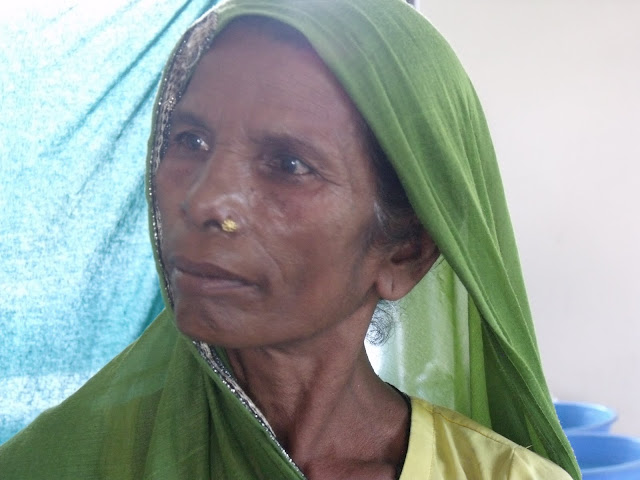One of the biggest health issues facing Nepali women is Uterine Prolapse. This is when the uterus starts to fall out of the body - its comes in various degrees and is shockingly common in Nepal. I'd never even heard of it prior to coming to Nepal - but now I hear about it almost every day!!
First or second degree prolapse can be treated through rubber rings inserted into the pelvis to hold the uterus in place, and pelvic floor exercies. Third degree prolapse is the most serious, this is when the uterus falls out of the pelvis and hangs like a tennis ball out of the body. Surgery is required at this stage.
The health camps are important for identifying women suffering from uterine prolapse so they can be referred for free treatment in a hospital. The most difficult thing to comprehend is that many of the women suffering from uterus prolapse have been living with it for years (we have heard cases of women living with it for 17+ years). From the outside you cannot tell, the women hide their pain so well.
55 women have been identified and treated as a result of the 16 health camps. 7 were identified at the health camp in Jhapa. An additional 15 women have been identified by Bijea, the nurse working in remote western Nepal. Thanks to Rotary support these women have all been able to have treatment. The surgery, along with travel, food and accomodation costs for the women is only approx. $US 500 per person. Unfortunately this is not affordable or accessible for the women, and it is only through the health camps that many realise help is available. Sadly some women refuse the treatment as it is impossible for them to take the time off after the surgery to recover, or they do not have anyone to support them during this time. This was the case for one of the women identified in Jhapa. All she requested was some painkillers - and to think of the times we complain of a headache!
It is estimated that more than one in ten women of reproductive age in Nepal is suffering from 3rd degree prolapse. Uterine prolapse is caused by many factors, including early and frequent pregancies, home births, resuming heavy workloads straight after giving birth, and poor nutrition. Many husbands will leave their wives in this condition as they can no longer engage in sexual activity.
First or second degree prolapse can be treated through rubber rings inserted into the pelvis to hold the uterus in place, and pelvic floor exercies. Third degree prolapse is the most serious, this is when the uterus falls out of the pelvis and hangs like a tennis ball out of the body. Surgery is required at this stage.
The health camps are important for identifying women suffering from uterine prolapse so they can be referred for free treatment in a hospital. The most difficult thing to comprehend is that many of the women suffering from uterus prolapse have been living with it for years (we have heard cases of women living with it for 17+ years). From the outside you cannot tell, the women hide their pain so well.
55 women have been identified and treated as a result of the 16 health camps. 7 were identified at the health camp in Jhapa. An additional 15 women have been identified by Bijea, the nurse working in remote western Nepal. Thanks to Rotary support these women have all been able to have treatment. The surgery, along with travel, food and accomodation costs for the women is only approx. $US 500 per person. Unfortunately this is not affordable or accessible for the women, and it is only through the health camps that many realise help is available. Sadly some women refuse the treatment as it is impossible for them to take the time off after the surgery to recover, or they do not have anyone to support them during this time. This was the case for one of the women identified in Jhapa. All she requested was some painkillers - and to think of the times we complain of a headache!
 |
| One of the women suffering from 3rd degree prolapse - shes lived with this for around 10 years! |
It is estimated that more than one in ten women of reproductive age in Nepal is suffering from 3rd degree prolapse. Uterine prolapse is caused by many factors, including early and frequent pregancies, home births, resuming heavy workloads straight after giving birth, and poor nutrition. Many husbands will leave their wives in this condition as they can no longer engage in sexual activity.
 |
| Women in waiting room |
 |
| Examination area |
No comments:
Post a Comment